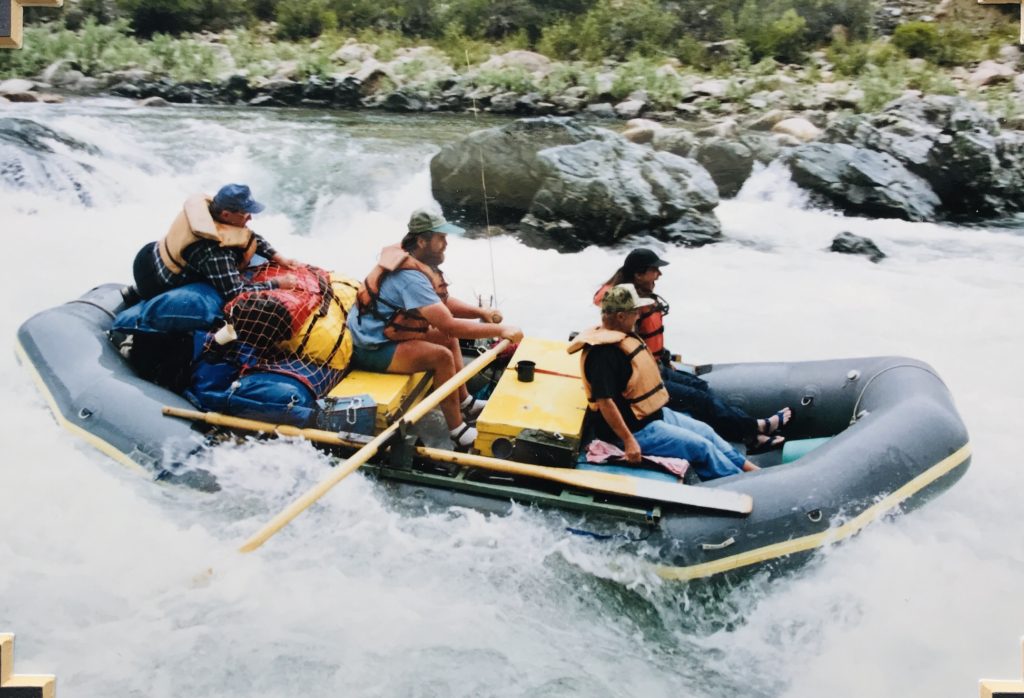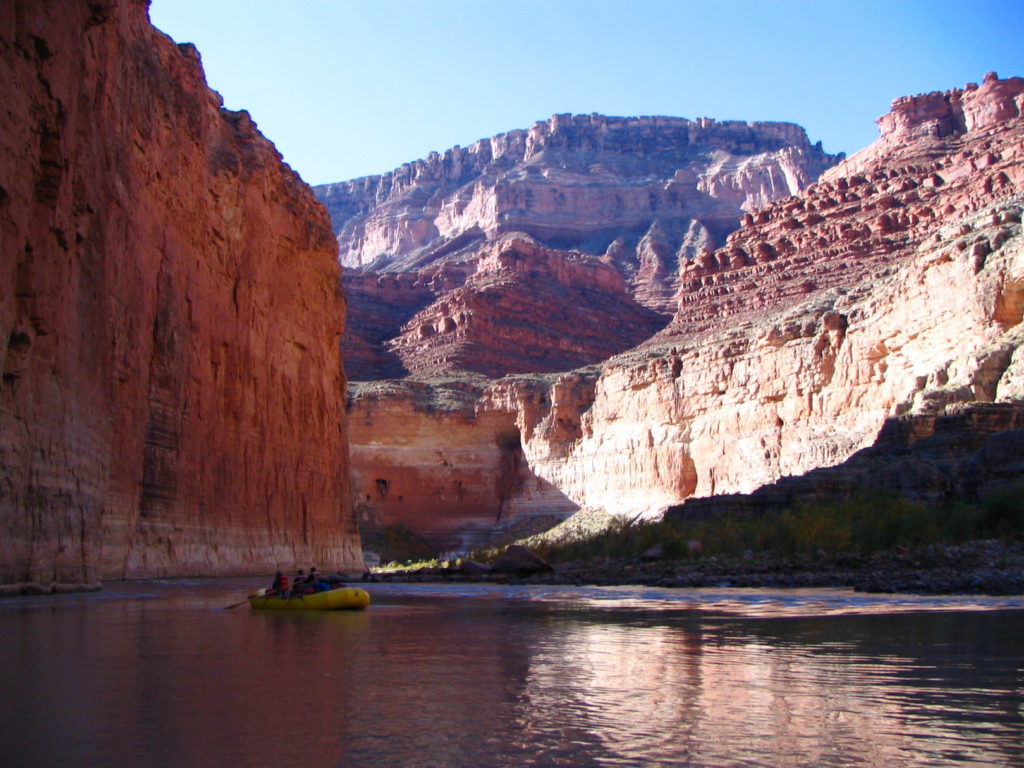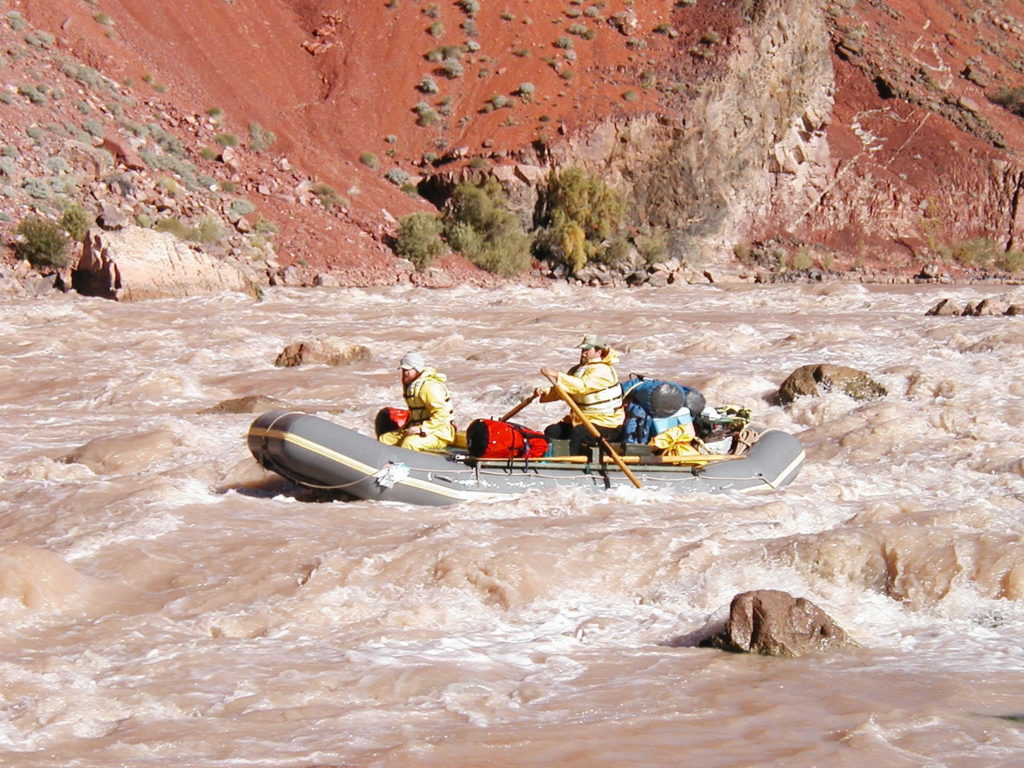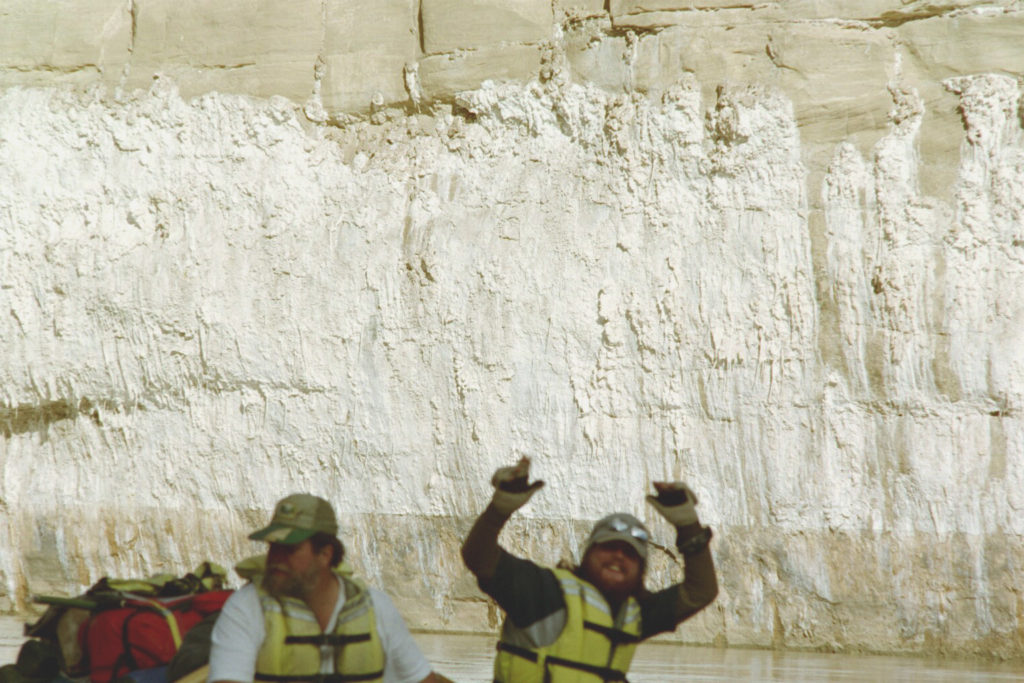CHAOS AND RIVERS

THE SNAKE RIVER, IDAHO FALLS
Coming back to the Snake River this winter, just before spring began, I was forcibly reminded of how alike a river is to the human narrative. Time has a topology over which events must flow and there is an element of chaos in both kinds of rivers, the rivers of our lives and rivers like the Snake River where I have returned. Watching the river thaw this March was heartening to me for I had come to identify with the Snake and with a story beginning again, as the ice melted the river’s story and my story began again.
A qualification of the word chaos needs to be made here. Historically, the word chaos did not denote random confusion. Chaos was the void between heaven and earth and the source of all forms, a source that is a mystery beyond human reckoning, but never random.
Rivers follow rules that apply to gravity and water, but they contain chaos as well. They have within them a source of novelty and change affecting the evolution of life around them. It is the element of chaos in nature that drives evolution. And this is the same in the stream of human life.

My Family and the River
My brother-in-law Steve worked in the Idaho Wilderness for many years and has given me insight into the fate of the salmon migrations that have been destroyed by dams on the lower Snake River. He has taken members of our combined families down the Middle Fork of the Salmon, a tributary of the Snake, over many years. He has always claimed that no one who takes the trip, which includes five days in wilderness on the most challenging rapids short of the Colorado, remains unchanged. This suggests a relationship between people and rivers more mythical than practical.
It is Steve’s sensibilities that have informed my own and convinced me of the worth of wild rivers, and of wilderness.
I see the metaphor that links the fate of these rivers to human destiny; our stories and the stories of rivers. It is not enough to speak for the salmon, for what we really should be defending is so much bigger and can be more readily understood if we understand the metaphor of river to life.
Not Enough Chaos
Too much top-down control of nature can cause harm. There must always be a balance between order and chaos; chaos being the creative principle within life.
A certain amount of chaos is required if life is to evolve. With too much order, nothing can change. In the end, too much order is as destructive as too much chaos.
Without chaos, the abilities of humans to diversify, move past established norms, oppose fixed rules so they can transcend their own limitations are stifled. Without the chaos of creativity, and without real diversity of thought, the human river can become like the Los Angeles River, running through concrete aqueducts, polluted and dead.
The Los Angeles river is an example of a misguided excess of control.
The story of the Colorado River exemplifies this process.

The Colorado
Once the mighty Colorado created three thousand square miles of wetlands before exiting into the Pacific, the largest desert estuary on the continent. The river no longer reaches the Pacific. Now Lake Powel and Lake Mead are filling with this silt once deposited in the Gulf of California, but now, far inland. As of April, 2022, Lake Mead, the source of 90 percent of water for Las Vegas, stands at 31% of its capacity, an all-time low.
Reduced flows from dams and an over-use of the rivers for human industry has affected the water quality downstream, poisoning eco-systems with pesticides and a high saline content.
The damage to these eco-systems is complex and it is difficult to know what all these changes portend to future generations. One thing is clear: cities like Phoenix, Las Vegas, San Diego, and Los Angeles, exist in places with far too little water of their own to support the size of their populations, and after exploiting the waters from the Colorado and draining distant aquifers in other states for two generations, the water is running out.
Steve in the Grand Canyon




In recent years drought conditions in the West have continued and the cumulative effects from the controls imposed by human interference on the natural rivers are becoming apparent. Water levels in reservoirs have become so low that dams could become useless. And moving massive amounts of water over such distances between Colorado, to California, and Arizona, results in tremendous waste due to evaporation. It can be argued that we need a different approach to the way we manage our resources; a new cost assessment is needed that studies long term effects of our policies.
What might have been gained by allowing the Colorado more agency, collaborating with it so that some development could happen without killing it? Certainly, the history of the Southwest would have been very different.
In Hindu philosophy, water is “life force,” and divine. Rivers are divinities. I am assuming that modern Indian Rivers are as exploited as our rivers, but I like their original, mythological approach. Rivers were protected and celebrated and considered divine. I am sure the American Indians would have been in agreement.
:
PERMACULTURE
It was the Colorado river that cut Glenn Canyon out of the rock. And it took more than the history of human life-times to do it. Lake Powell has filled Glenn canyon since 1966. And it has been within my lifetime that the salmon have disappeared from the Middle Fork of the Salmon.
I am taking Karen Ercolino’s suggestion about deep mapping the landscape. And it is curious how I begin to merge with the landscape, our stories combined. Perhaps this is the central goal of permaculture: To understand that we are the river.